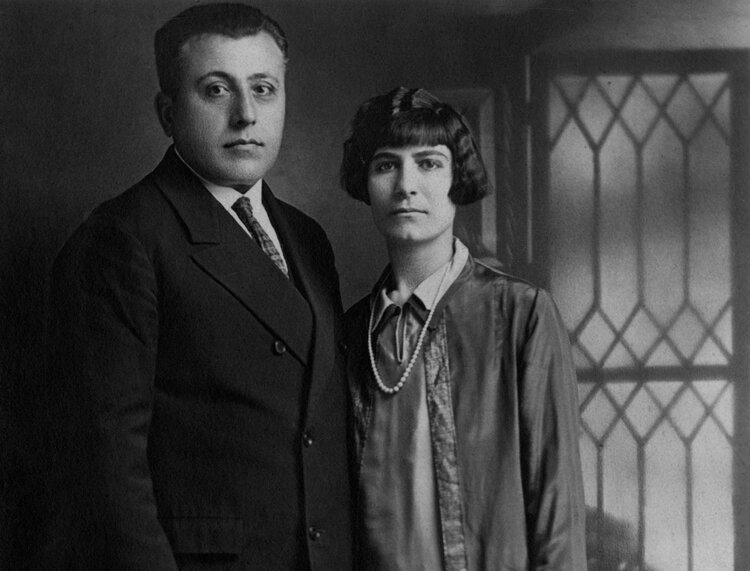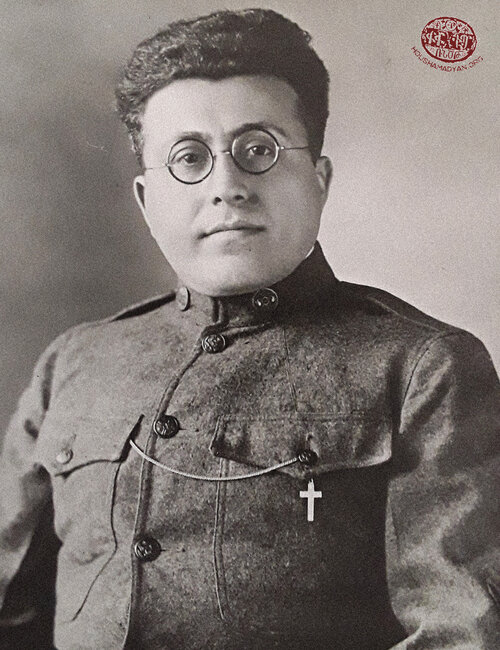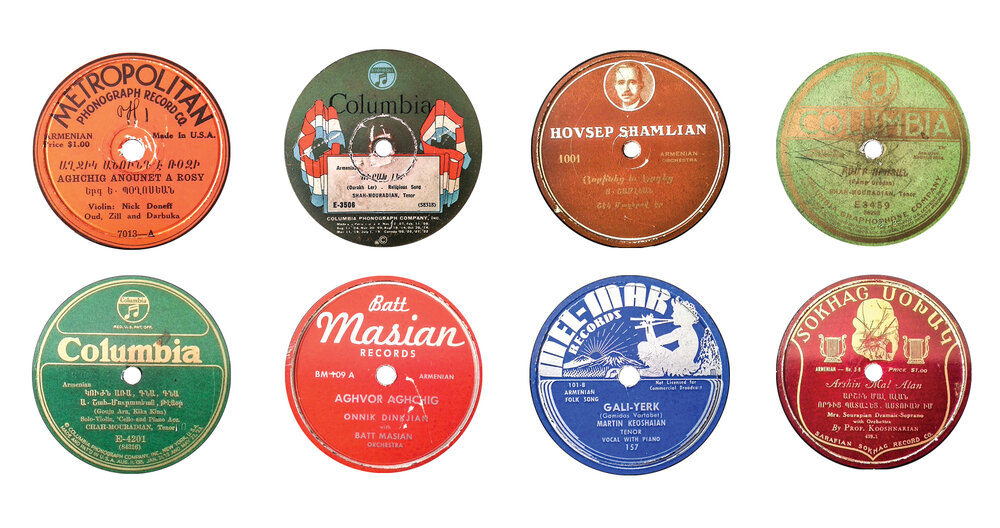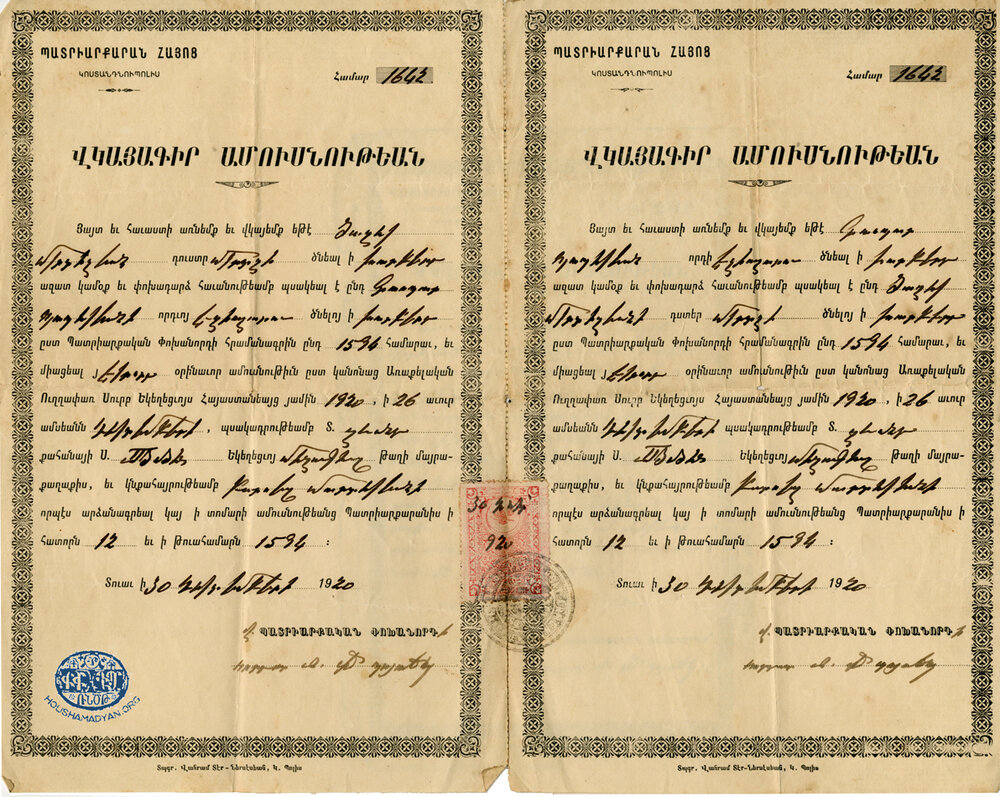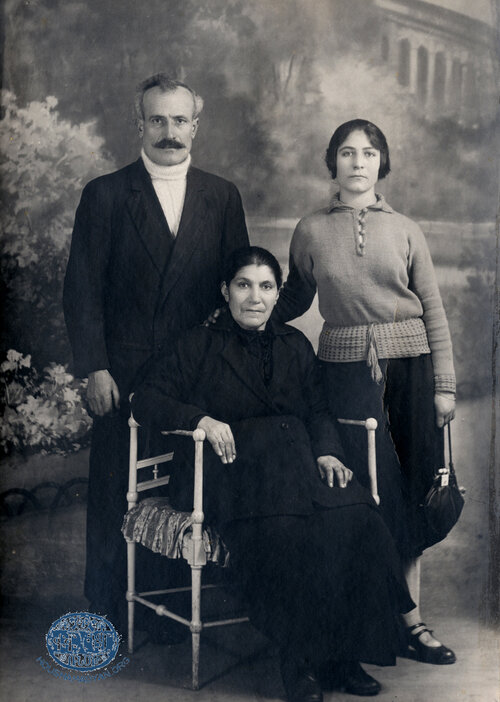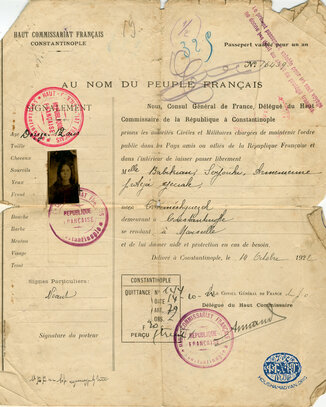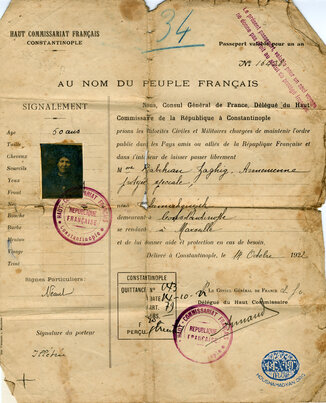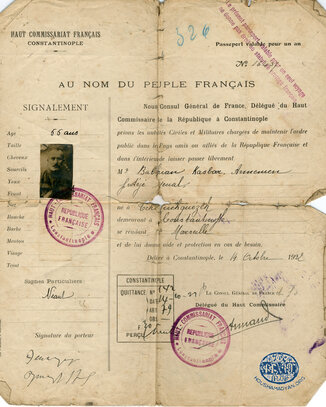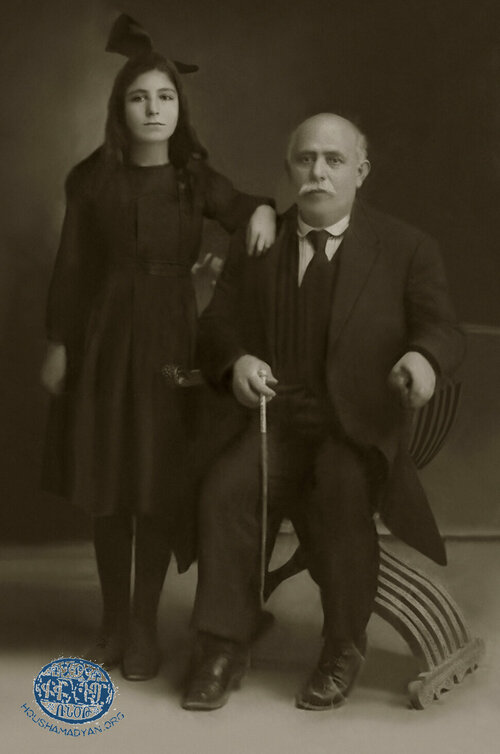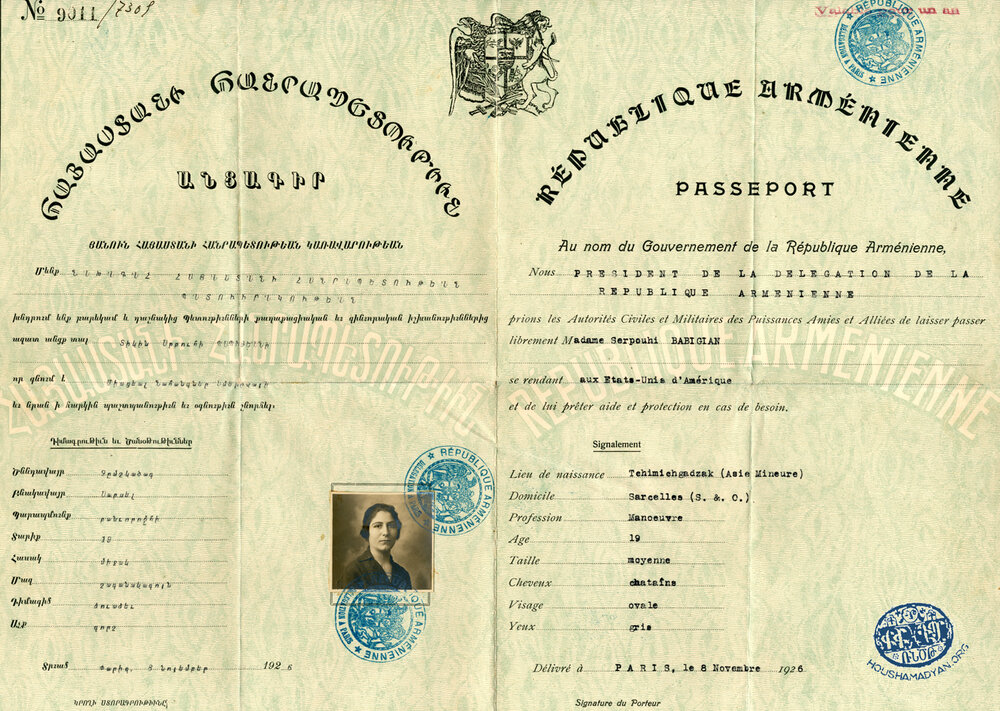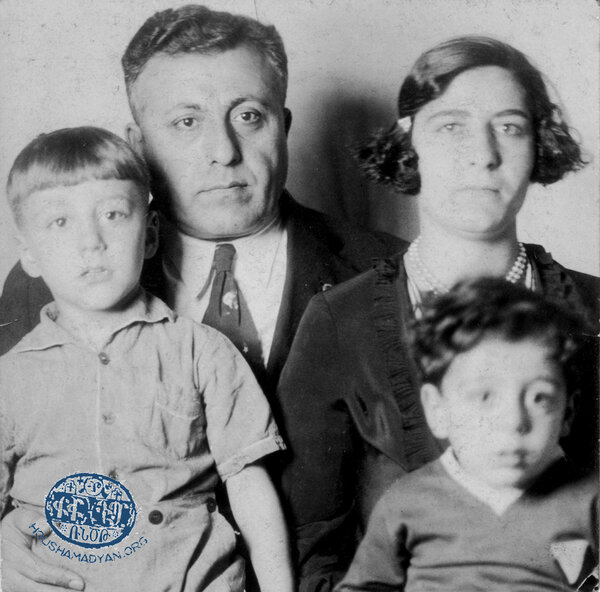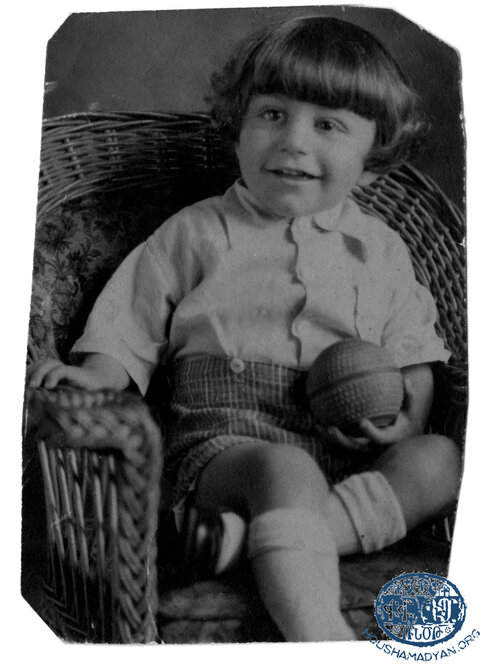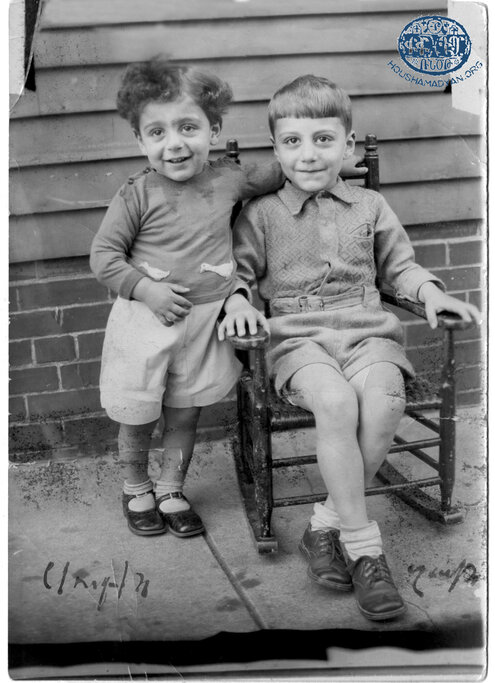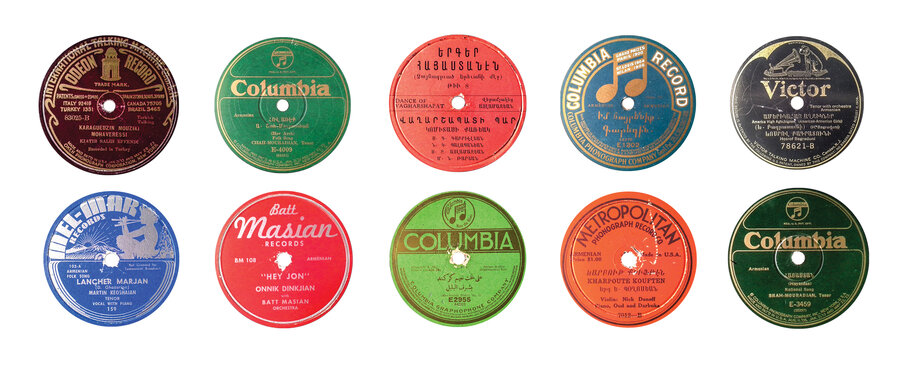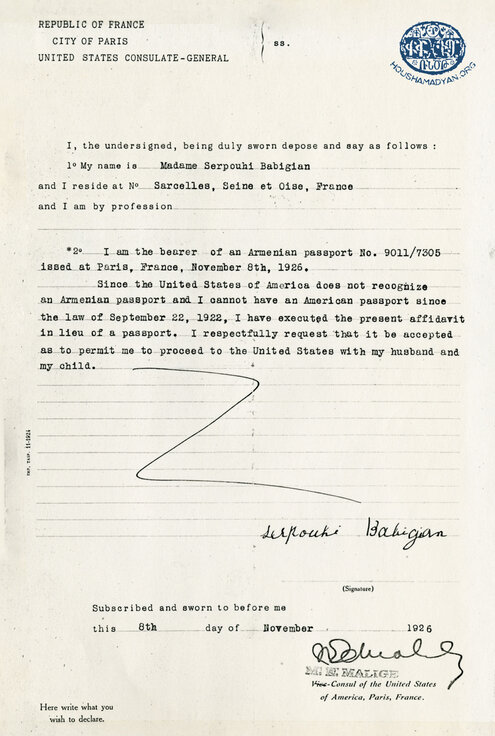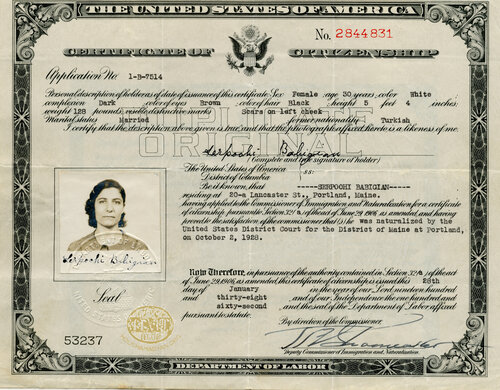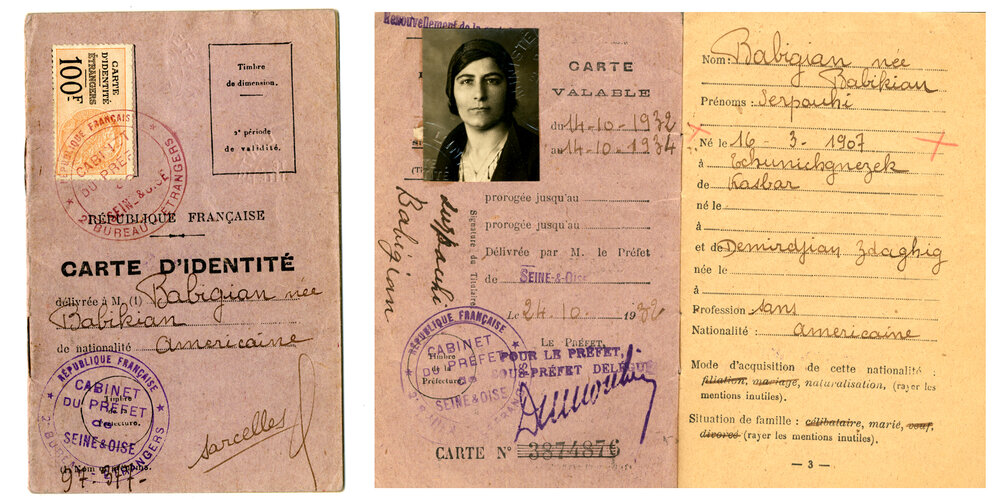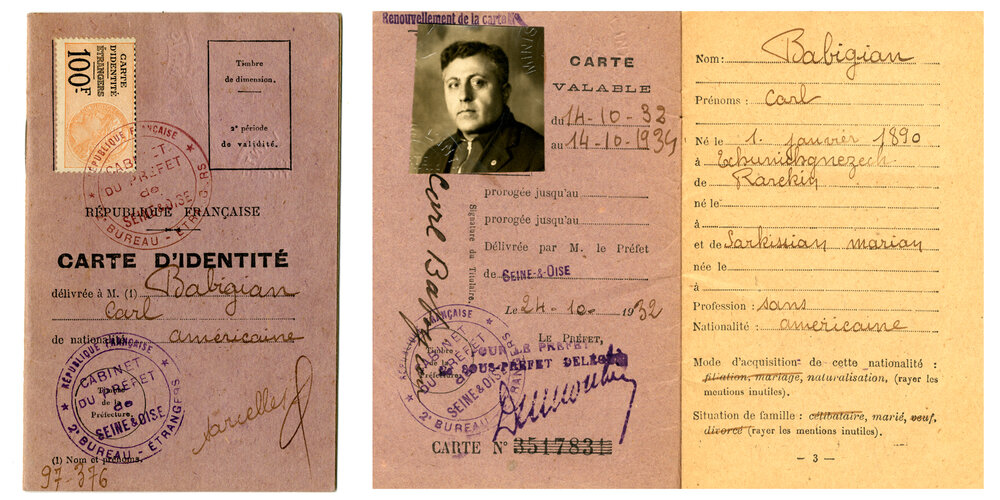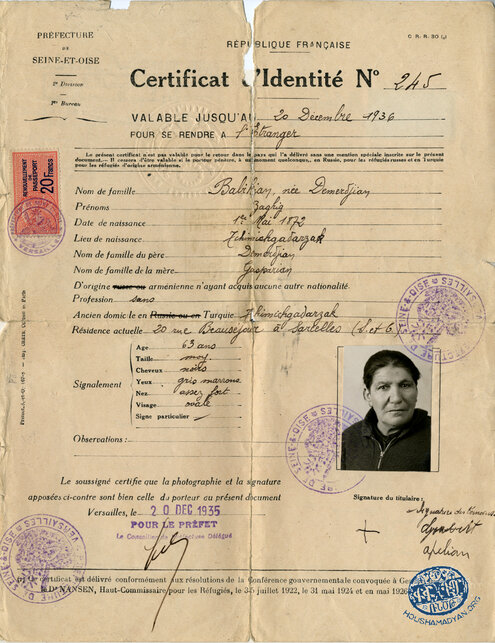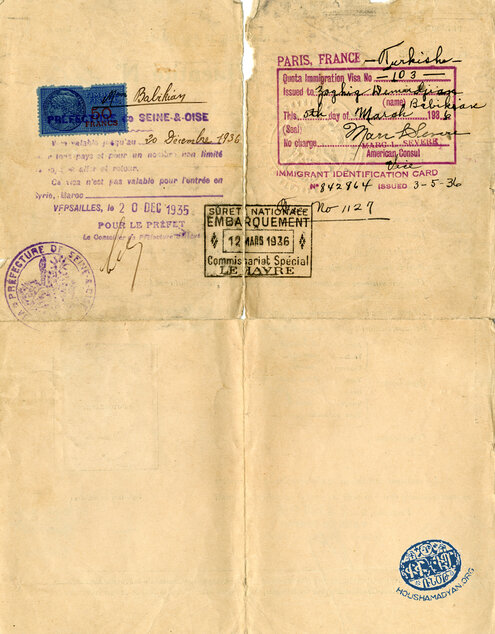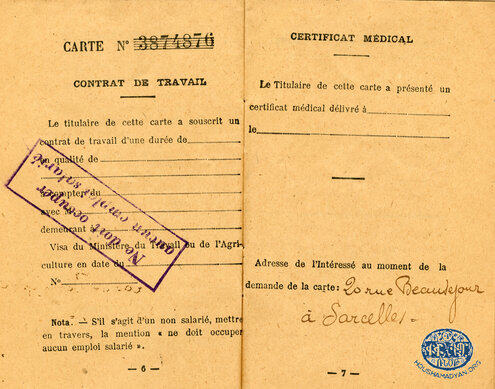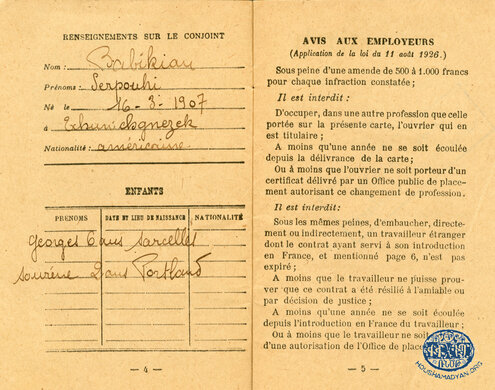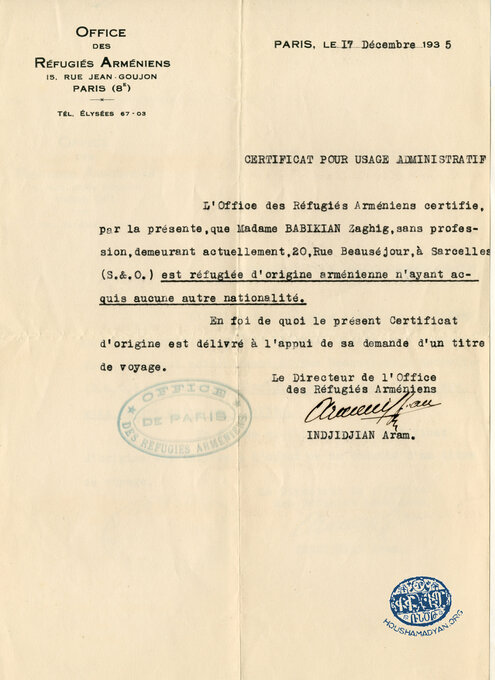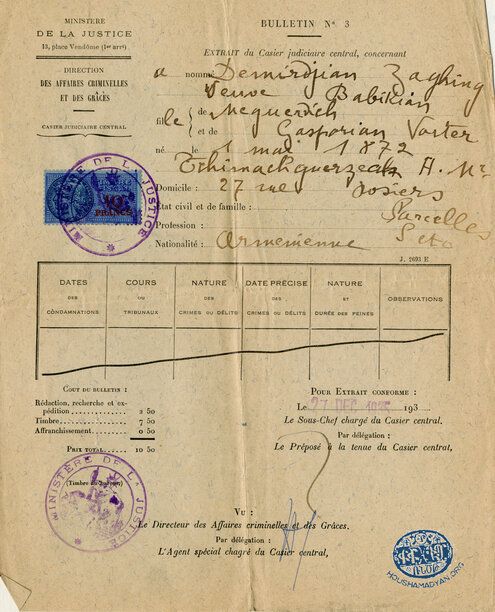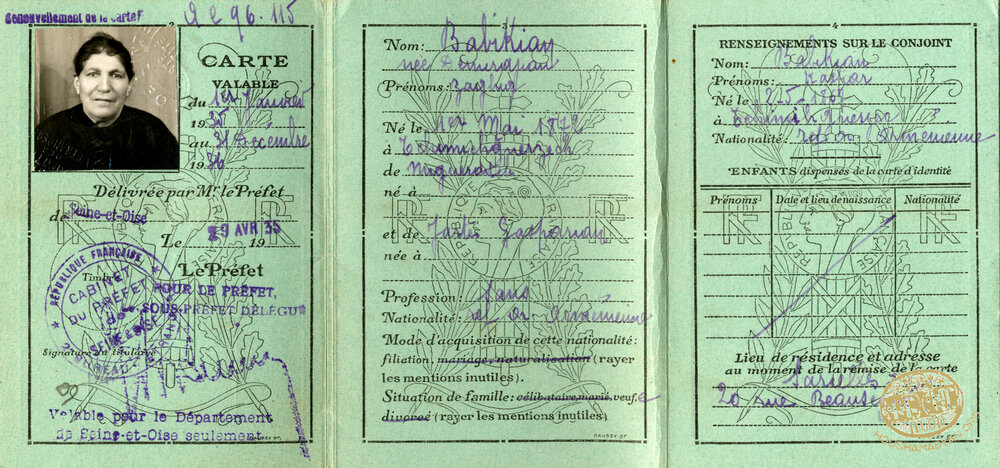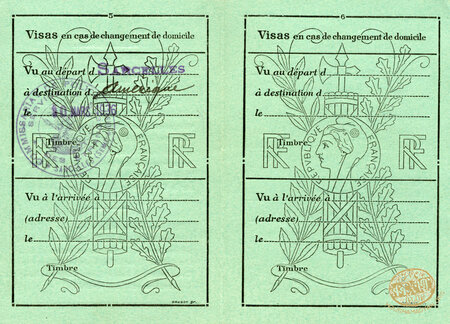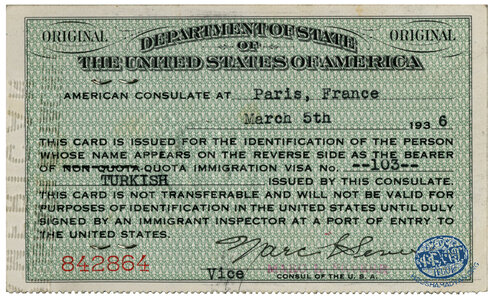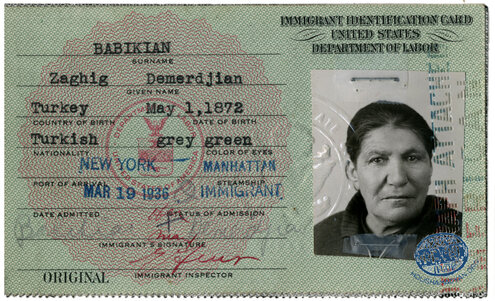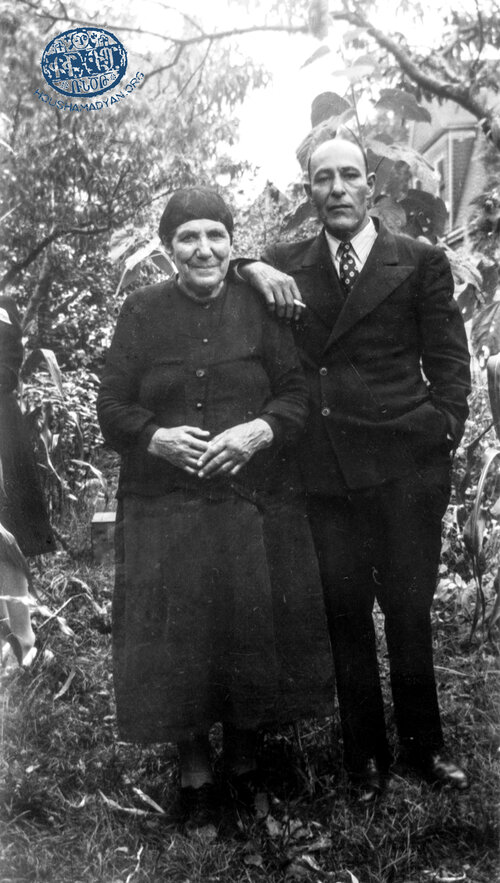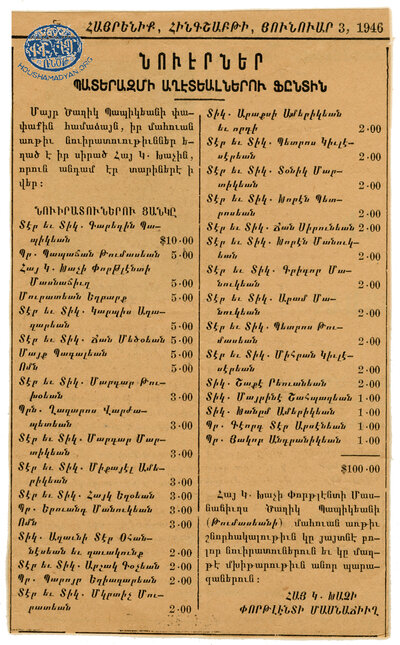Babigian collection - Los Angeles
Author: Serina Babigian Rosenkjar, Ph.D., 20 June 2019.

Editorial note:
All the texts and captions on this page were written by Serina Babigian Rosenkjar, the paternal granddaughter of Karekin/Karaken/Carl and Serpouhi/Serpoohi Babigian. These are their photographs, documents, biographies, music and fairy tales.
Please take note that in this family collection the spelling of the Armenian names are changed according to the French or English transliterations, which you can see in the left column.

In 1890, Garabed Babikian and his wife, Mariam Sarkissian were the head of the Babikian family. They had a son, Karaken, on January 1, 1890, and a daughter, Badaskhan who died in the genocide. They were farmers and shepherds, in Chmshgadzak/Chemishgazak/Çemişgezek (sandjak of Dersim, vilayet of Kharpert/Harput), until the local Turkish and Kurdish soldiers invaded their land and killed most of them.
Garabed had two brothers, Baghdassar and Kasbar. Baghdassar married Anna and they had three sons, Abraham, Yeghiazar and Garabed, and a daughter named Vart Nazeli. Baghdassar and Anna were killed by Turkish soldiers. Kasbar and his first wife, Varter had four daughters, Santookhd, Maritza, Zartig and Loosig. Kasbar and Loosig, were able to flee the massacre and moved to France, but the rest of his family were killed.
After his father’s death, Karaken went to America to become a gunsmith. Several years later, he bought arms and ammunition and took them back to the Ottoman Empire, to aid the Armenian Revolutionary Federation (ARF, Dashnak Party). On his return home, he married Soghome and they had two children, Krisdapor/Crestafor and Shakeh. After several years, Karaken went back to America to raise more aid for the ARF. Unfortunately, during the genocide, local Kurds and Turks took over the Babikian farm and Soghome, fearing for her children, tied rocks around them both and threw them into the river and then did the same to herself.
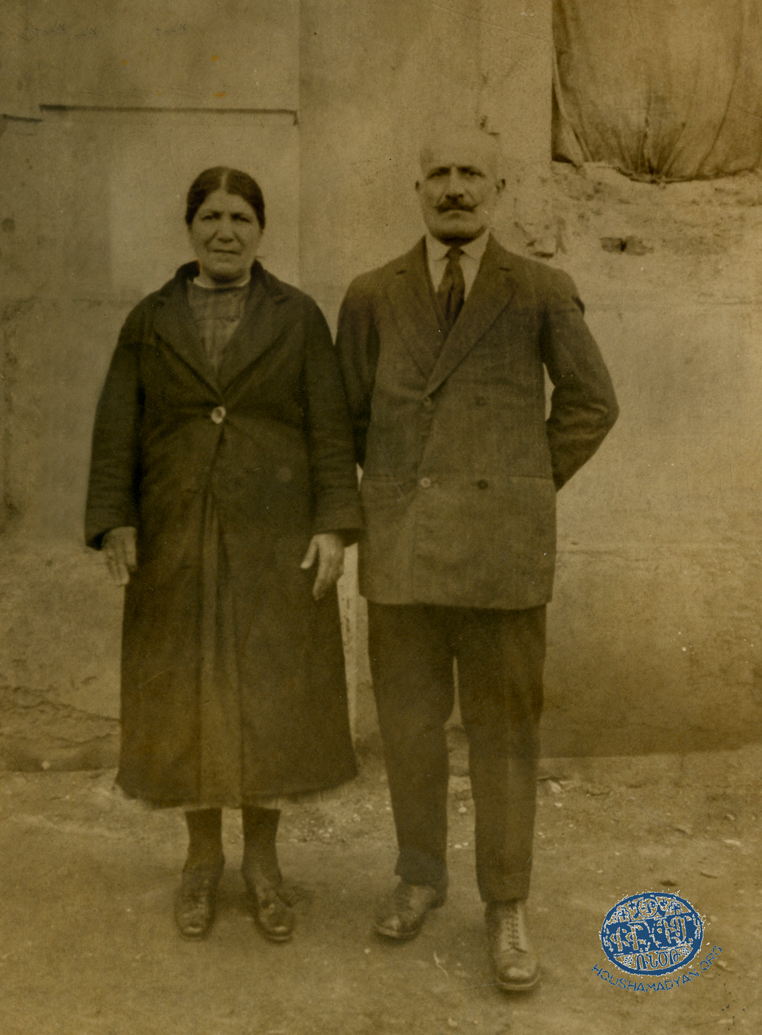
On July 30, 1918, Karaken learned of his family’s death. On the same day, he changed his name to Babigian, enlisted into the US Army and became a US citizen. He asked to be sent to the Ottoman front, instead, because of his paramilitary experience, he was made a Private in the 1st Battalion, 151st Depot Brigade Chemical Warfare Unit.

After the war, Kasbar married a woman named Zaghig Demirjian Toumasian/Thomasian whose first husband, Haroutyun/Harootun, had died in the Khadishar (a village in Chmshgadzak) massacre. Harootun and Zaghig had 12 children. Unfortunately, after the massacre, only Zaghig and four children remained. Serpouhi, the youngest, was born on March 16, 1907, then Gulistan, Kohar/Cohar and their brother Babajan.
Sometime later, Cohar married a man named Kevork from the village of Ashvan (present-day Muratcık, located in the plain of Kharpert/Harput). He had lost his wife in the massacre, but not his little girl, Nevart. After their wedding, Cohar went to Ashvan with Kevork while Zaghig, Serpouhi, Gulistan and Babajan stayed in Khadishar until Kevork could provide a home for them.
These are the phonograph record labels of the Babigian family music collection. Click HERE to listen to the first volume of the collection. The Babigian family listened to these Armenian songs in the United States from the 1920s onwards.

Before the massacre of 1915, Zaghig left Ashvan for Batumi to ask for help from her family. Shortly after, Turkish soldiers entered Ashvan with a vengeance. They took all the Armenians’ livestock, money, land and valuables; burnt or confiscated their homes and tied up the men, including Kevork, and boys, marched them to a cliff, shot or stabbed them and then threw their bodies into the river. The women and children were spared which meant Cohar, Gulistan, and Serpouhi were alive and homeless, until the Turkish soldiers gathered the women and children and marched them out of town. On the march, the soldiers threw the women or children who were dead, sick or old off the mountain road, those who survived, reached Aleppo, Syria.
Only Serpouhi and Gulistan made it to Aleppo. They were taken to a fort and then to a large home, where Gulistan was kidnapped on their first night. Eventually, Serpouhi, now alone, found a way to escape and ran through the streets of Aleppo until a priest found her and took her to an orphanage for Armenian children where she would be safe.

Years passed, until the principle of the school decided it would be safer for the orphans to move to other cities. Serpouhi and twenty-nine others were sent to Lebanon to a town called Jebeil/Byblos.
In the meantime, Zaghig and Kasbar were living in Istanbul. They had been trying, for years, to find Zaghig’s children. One day, they heard of a girl, matching Serpouhi’s description, who lived in an Armenian orphanage in Beirut. Kasbar went to the orphanage, found Serpouhi and took her back to her mother in Ortakyugh/Ortaköy, in Istanbul. Then, in 1922, before the establishement of the Kemalist regime in Istanbul, Kasbar and his family boarded an Italian ship bound for Marseille where they heard that the French government accepted Armenian refugees. The French placed the Armenians in large camps. Serpouhi and her family were sent to a camp in Marseille and then to another in Dacozville.
Serpouhi and Kasbar made enough money to leave Dacozville and move to the Pigalle neighborhood in Paris where they rented an apartment. Then they saved enough money to buy land and build a home in Sarcelles, Seine-et-Oise, a town outside of Paris. Serpouhi’s parents also realized that she was becoming a young woman and so they decided she should marry. Kasbar had a nephew named Karaken Babigian who lived in the United States. On December 26, 1925, Karaken arrived in Sarcelles and on January 2, 1926 they were married.
That year, Karaken and Serpoohi had a son, Zaven. After his son’s birth, Karaken took his family to America. After disembarking, they went to Lawrence, Massachusetts where his family lived. Unfortunately, Karaken could not find work in Lawrence, so they moved to Portland, Maine, where other family lived and where he became a barber.
Karaken and Serpouhi’s second son, Souren/Sooran, was born on August 1, 1930. Then in 1932, they went back to France. They stayed about a year, until Kasbar became ill and died. Shortly thereafter, the Americans, living in Europe received letters from the American Red Cross telling them to return to the US. The stock market had crashed and all the family’s savings was lost. Fortunately, the family’s passage was paid by the Red Cross.
As soon as they arrived in Portland, they began to save money to bring Zaghig to America. Zaghig received her US identification card on March 5, 1936 and soon thereafter, boarded a ship to America. On March 19, 1936, Zaghig came to America and lived with her family for the rest of her life.
The family continued to live in the United States. Karaken died on July 13, 1979 and Serpouhi died on November 10, 1998.
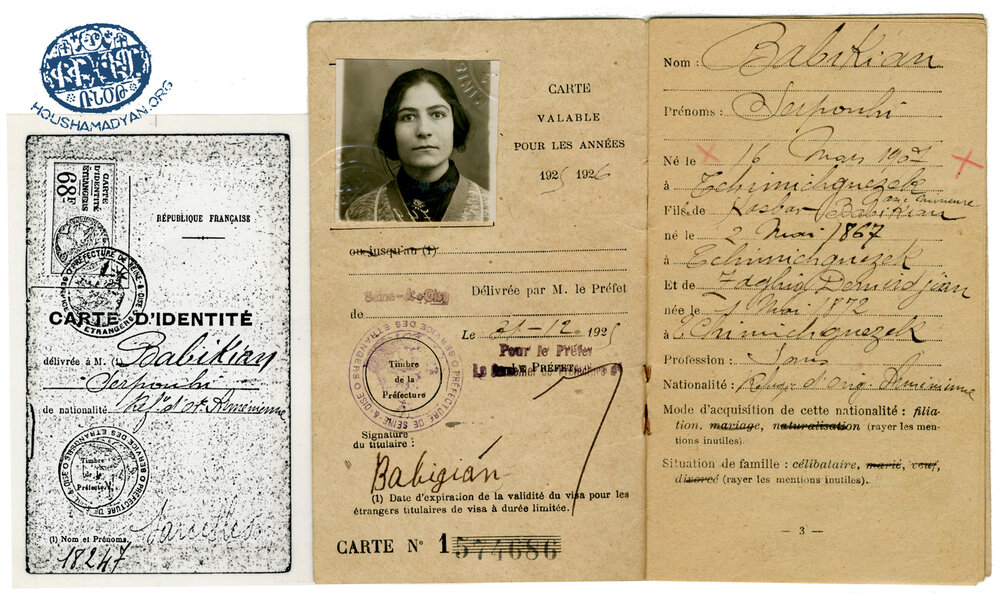
Name: Babikian Serpouhi; Date of Birth: March 16, 1907 in Tchmichguezek [Chmshgadzak/Çemişgezek]
Father: Kasbar Babikian; Born: May 2, 1867 in Tchmichguezek
Mother: Zaleg Demerjian; Born: May, 1872 in Tchmichguezek
Profession: laborers; Nationality: Armenian refugee (with an unknown nationality)


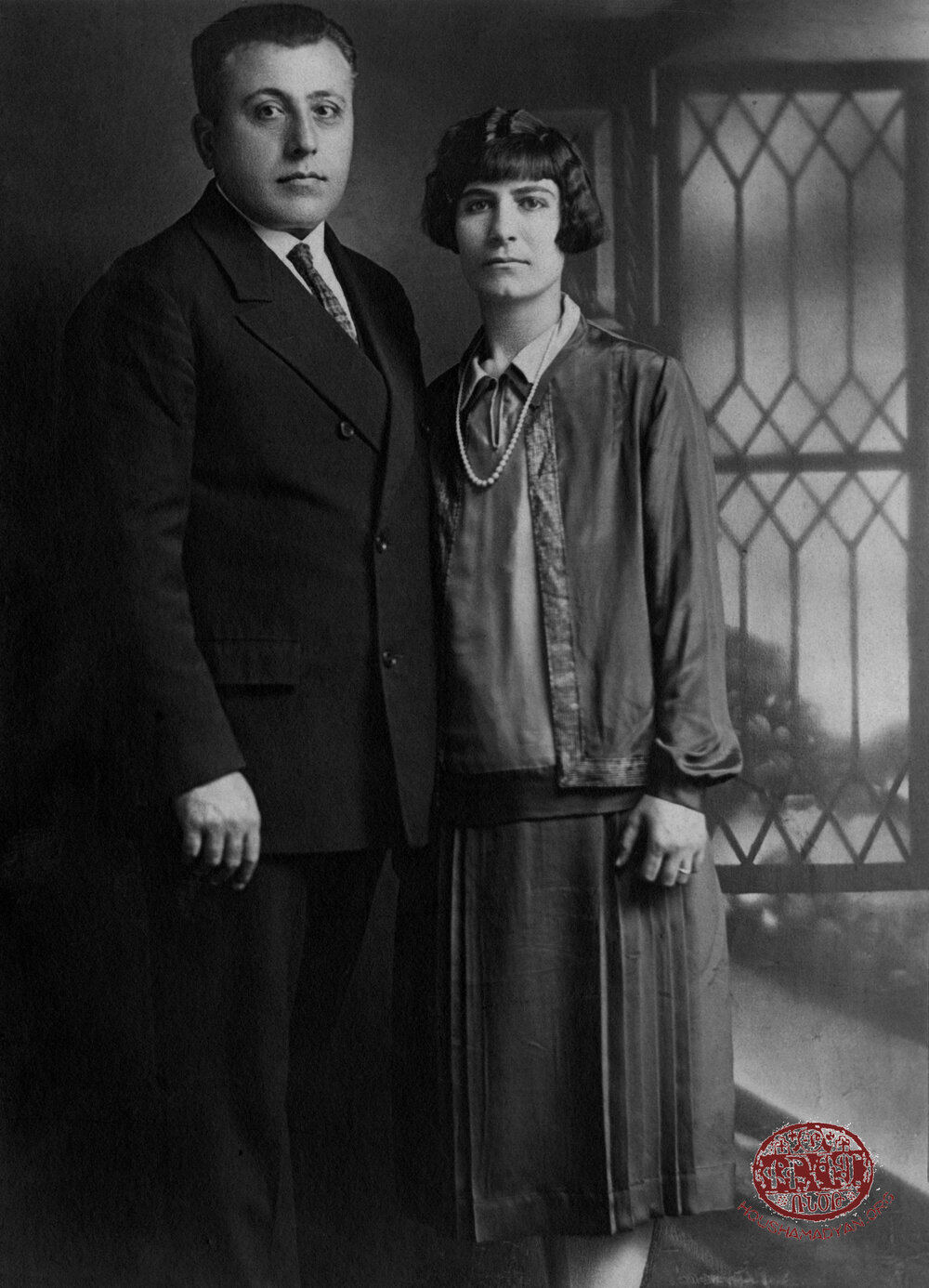

These are the phonograph record labels of the Babigian family music collection. Click HERE to listen to the second volume of the collection.
The Babigian family listened to these Armenian songs in the United States from the 1920s onwards.


Residence: Pigalle, Paris. For a time until they moved to Sarcelles, Seine-et-Oise. Arrived in Paris, July 30, 1923. Arrived legally in France from Constantinople on October 14, 1922.


